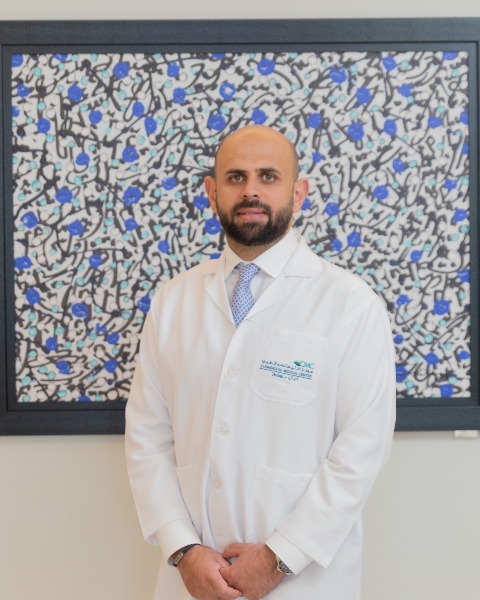Back
Poster, Podium & Video Sessions
Moderated Poster
MP45: Prostate Cancer: Markers
MP45-10: Does Perioperative Testosterone predict Post-Prostatectomy Genomic Risk Score?
Sunday, May 15, 2022
1:00 PM – 2:15 PM
Location: Room 225
mohammed Shahait*, Amman, Jordan, Joseph G. Cheaib, Baltimore, MD, Elai Davicioni, Yang Liu, san Francisco , CA, Ibrahim Abu Ghaida, Abu Dhabi, United Arab Emirates, Ryan Dobbs, Chicago, IL, Priti Lal, Daniel Lee, philadelphia, PA, PA, David Lee, Irvine, CA

Mohammed Darwish Shahait, MD
Consultant of Urology
Poster Presenter(s)
Introduction: The association between low serum testosterone and high-grade disease, advanced pathologic stage, and biochemical recurrence (BCR) following radical prostatectomy (RP), was observed in several cohorts. The effect of T on the tumor genome is not explored yet. To explore the correlation between perioperative T level on genomic risk score (GRS) in a cohort of men who underwent RP.
Methods: We included Pts who underwent RARP (2013-2018) & have(positive margin, and/or pT3a or higher).The outcome of interest was the GRS: low( <0.45), intermediate(0.45-0.6), & high (>0.6). Pts were categorized into: low ( <230), intermediate (230-350), & normal (>350). The associations between serum T level and 188 gene expression-based signatures retrieved from the Decipher GRID database were examined. Secondary outcomes of interest included BCR & receipt of secondary treatment.
Results: The median GRS score was lower in the low T group compared to the intermediate & normal T groups (0.38 Vs. 0.52 Vs. 0.53, respectively; p=0.049).However, when Pts were stratified into low-, intermediate-, and high-risk GRS groups, no differences of the categorical GRS groups was observed .A total of 63 (18.6%) Pts developed BCR. There was no difference in BCR-free survival between the three T groups (p=0.9) .Pts with low T level had significantly higher odds of receiving secondary treatment (OR: 2.27; 95% CI: 1.14-4.50; p=0.02) as compared to Pts with a normal T level .A total of 43 (of 188) gene expression signatures were associated with T level (p < 0.05). 33 signatures were positively associated with serum T levels including 12 signatures involved in DNA repair pathways.
Conclusions: This is the first study to assess the correlation of pre-operative T level on the tumor transcriptome and showed that no clinical correlation between pre-defined GRS groups and T group. Having said that, this study adds to the notion of the limited role of endogenous T on the development of de novo localized Pca.
Source of Funding: None


Methods: We included Pts who underwent RARP (2013-2018) & have(positive margin, and/or pT3a or higher).The outcome of interest was the GRS: low( <0.45), intermediate(0.45-0.6), & high (>0.6). Pts were categorized into: low ( <230), intermediate (230-350), & normal (>350). The associations between serum T level and 188 gene expression-based signatures retrieved from the Decipher GRID database were examined. Secondary outcomes of interest included BCR & receipt of secondary treatment.
Results: The median GRS score was lower in the low T group compared to the intermediate & normal T groups (0.38 Vs. 0.52 Vs. 0.53, respectively; p=0.049).However, when Pts were stratified into low-, intermediate-, and high-risk GRS groups, no differences of the categorical GRS groups was observed .A total of 63 (18.6%) Pts developed BCR. There was no difference in BCR-free survival between the three T groups (p=0.9) .Pts with low T level had significantly higher odds of receiving secondary treatment (OR: 2.27; 95% CI: 1.14-4.50; p=0.02) as compared to Pts with a normal T level .A total of 43 (of 188) gene expression signatures were associated with T level (p < 0.05). 33 signatures were positively associated with serum T levels including 12 signatures involved in DNA repair pathways.
Conclusions: This is the first study to assess the correlation of pre-operative T level on the tumor transcriptome and showed that no clinical correlation between pre-defined GRS groups and T group. Having said that, this study adds to the notion of the limited role of endogenous T on the development of de novo localized Pca.
Source of Funding: None


.jpg)
.jpg)